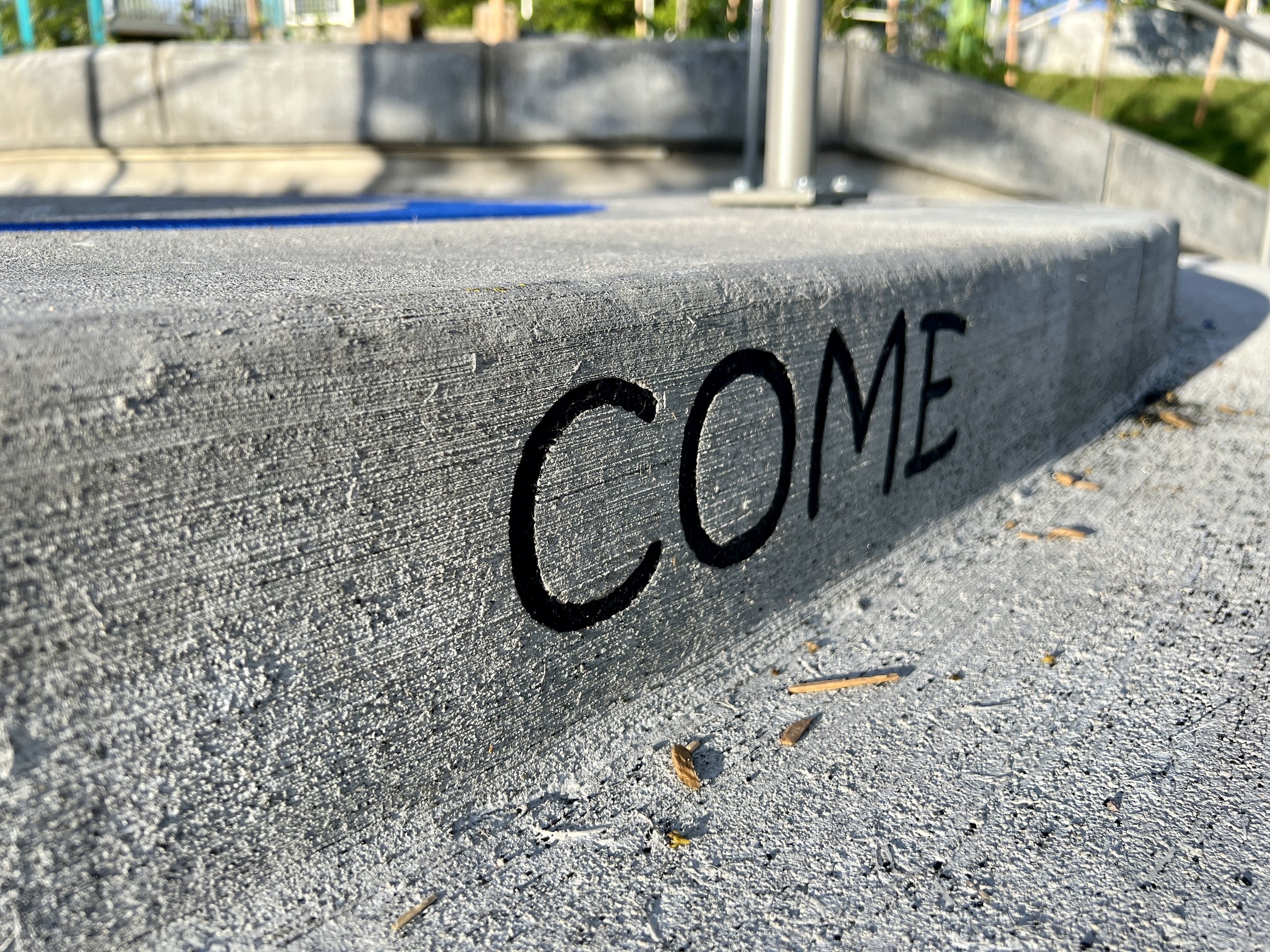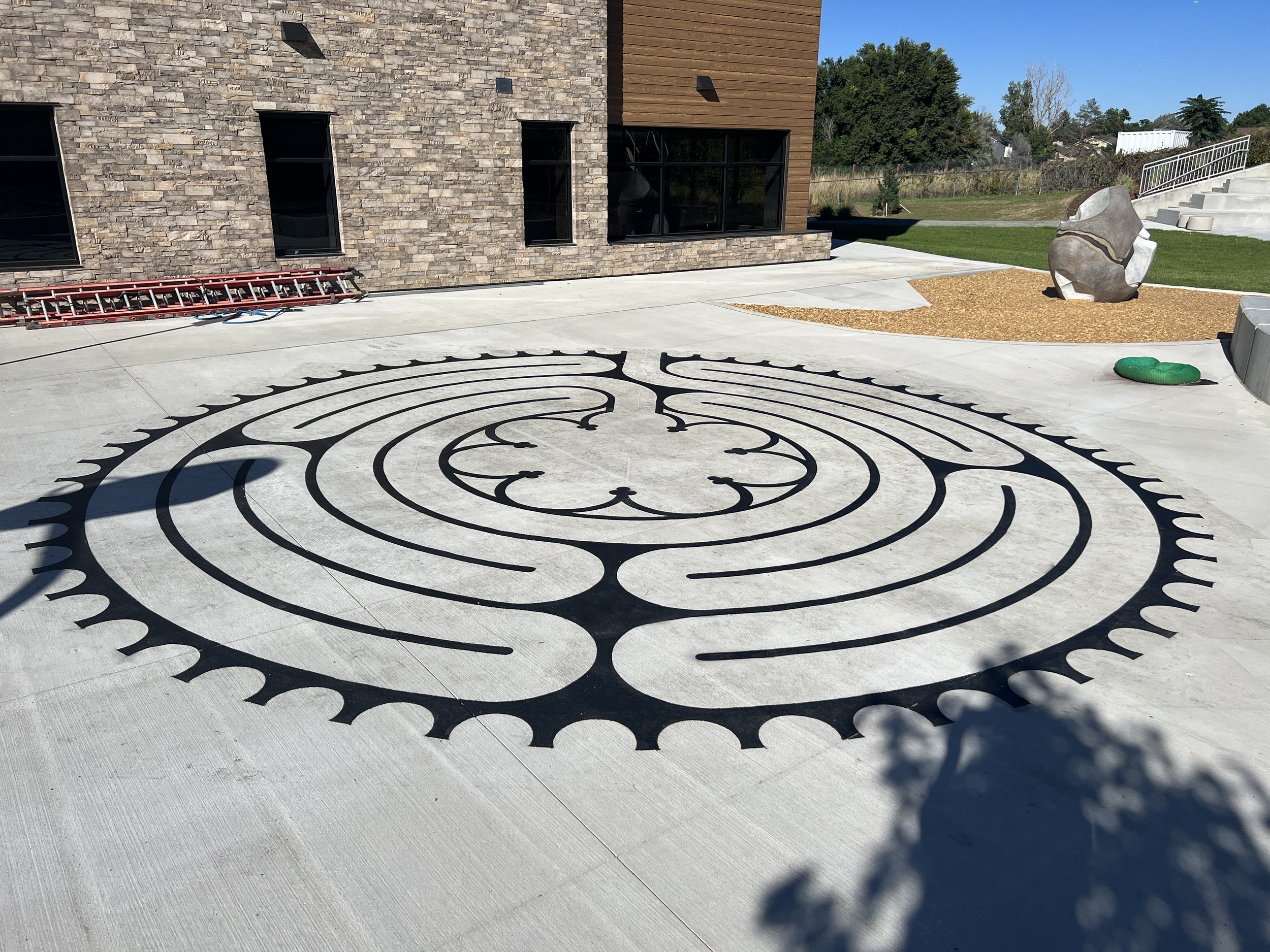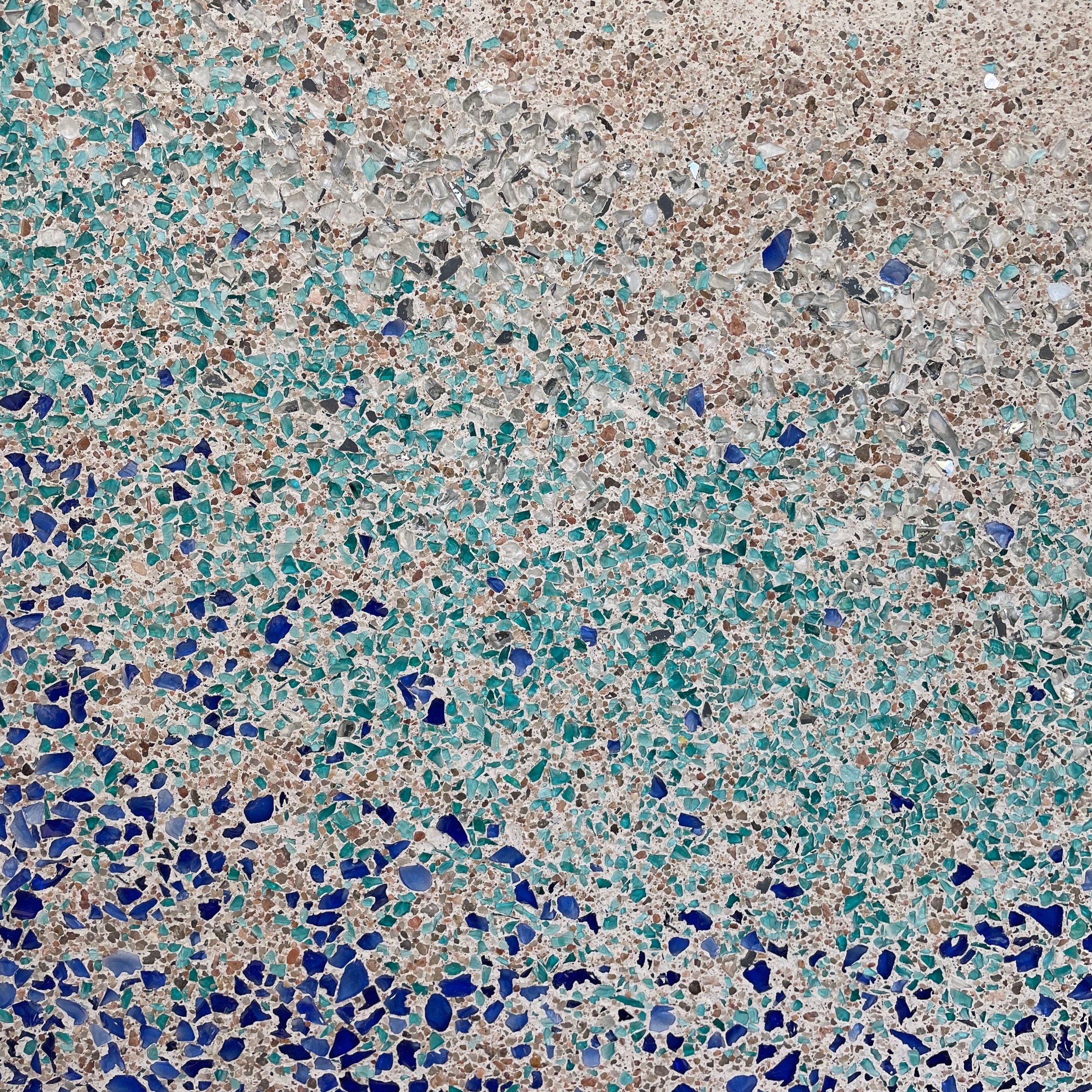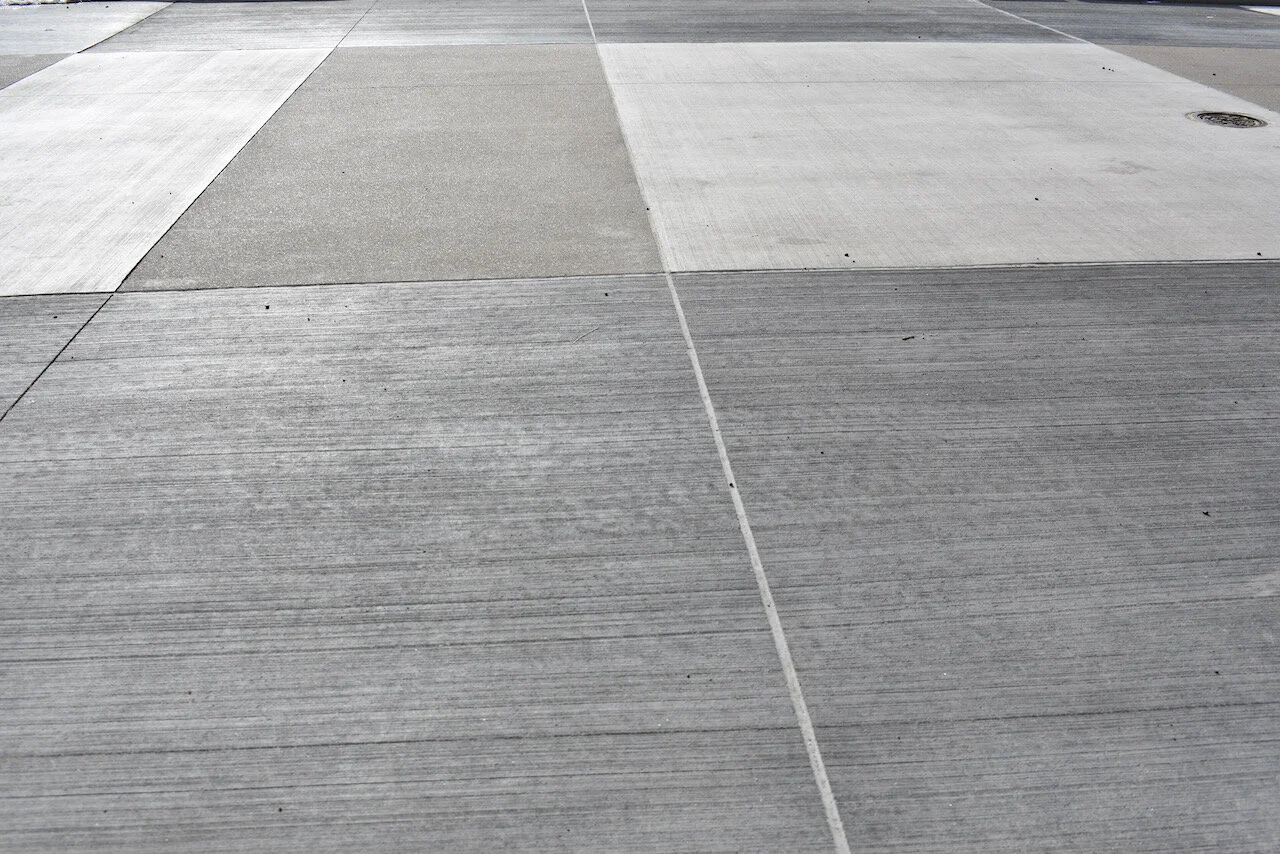A new trend has entered the realm of decorative concrete!
Concrete has long been valued for its durability, but it's also an incredibly versatile medium for creative expression. One of the most captivating techniques for adding unique designs, images, and text to concrete surfaces is sandblasting. This process transforms standard concrete into a canvas, allowing artisans to etch detailed patterns, images and text that elevate the material beyond its functional purpose. Let’s explore sandblasting in decorative concrete, how it works, and why it’s becoming a favorite in the world of concrete artistry.
What is Sandblasted Concrete?
Sandblasting involves projecting fine particles at high velocity onto a concrete surface in order to etch the surface. This process removes layers of the surface to create varying depths and textures. By controlling the speed, angle, and type of abrasive, skilled craftsmen (and women) can create intricate patterns and text, or even detailed imagery, into the concrete. The result is a beautifully crafted, durable piece of artwork.
The Art of Detail: Sandblasting Design for Precision
Achieving a stunning sandblasted design on concrete requires a combination of skill, patience, and a deep understanding of the tools and materials involved. Skilled artisans use custom stencils to protect certain areas of the concrete, allowing them to selectively expose only the areas they want to etch. This technique allows for incredible precision, even with complex designs, and helps to create sharp contrasts between sandblasted and untouched areas. But there are a few items to keep in mind when designing sandblasted concrete:
The surface shouldn’t be too rough. Either a smooth troweled finish or a light broom finish is ideal.
Stay away from hairy fiber - if possible, use concrete with a micro fibermesh in the mix.
Font size and details matter. Sandblasting is an abrasive process, and even the most skilled artisan can’t prevent small details from getting blasted away in the process, Review you desired design with the installation team to manage expectations and feasibility. Small details or centers of some letters (a’s, o’s, p’s etc…) can become tricky if the font size is too small.
The surface must be clean. The blast mats used have a sticky back to adhere to the concrete during the blasting process - if the surface is dirty - the mats won’t stick!
Temperature matters - the concrete surface should be at least be above 45*, ideally above 60* so that the mats can stick properly.
Designs can be stained for additional contrast and design.
Common Applications
Sandblasting is popular in both functional and decorative applications. Here are some areas where this technique shines:
Public Art and Murals - Sandblasted murals can turn a plain concrete wall into a visually stunning public artwork, celebrating community culture or history.
Wayfinding and Signage - Sandblasted concrete signs provide a durable, weather-resistant way to display essential information. This can be done on both horizontal and vertical surfaces.
Memorials and Monuments - The longevity of concrete makes it an ideal surface to create long-lasting messages and tributes.
Personalized Driveways and Walkways - Homeowners and businesses alike are starting to use sandblasting to personalize concrete surfaces with their family name, family crest, company logo, or custom patterns.
Parks and Playgrounds - Schools and municipalities have discovered the art of sandblasting and use it to create playful, long-lasting games, logos, signage, and more!
The Benefits of Sandblasting in Decorative Concrete
The sandblasting technique offers several advantages:
Durability - Because the design is etched directly into the concrete, it won’t fade, peel, or wear away with time, even in harsh weather conditions. Stains that are applied to the sandblast design may fade, but can be touched up.
Customization - Sandblasting allows for almost unlimited customization. From intricate patterns to bold logos, it’s an ideal technique for one-of-a-kind designs.
Low Maintenance - Sandblasted surfaces are easy to maintain. The technique produces a surface that resists wear, whether in high-traffic areas or under constant exposure to the elements.
Adds Value - Sandblasting can increase the aesthetic and market value of a property. Whether for a public space, business, or residential area, it provides a unique, lasting artistic appeal.
Why Sandblasting is an Artform
Sandblasting concrete combines artistry with the durability of concrete. The artist has to carefully plan the design with a vision of how it will appear on a concrete surface. Each stage of sandblasting requires control and attention to detail, making it a meticulous process. In the hands of a skilled artisan, sandblasting can turn a basic concrete slab into a masterpiece that conveys emotion, brand identity, or cultural significance.
As decorative concrete continues to evolve, sandblasting remains a versatile technique, helping us see concrete as more than just a building material. It’s a powerful artform that opens doors to creative possibilities in modern construction and design.
---
For those looking to make a bold and artistic statement with their concrete surfaces, sandblasting offers a blend of durability, customization, and elegance. Whether for commercial spaces or personal projects, this technique is perfect for those who see the potential of concrete as a canvas for unique, enduring works of art.













